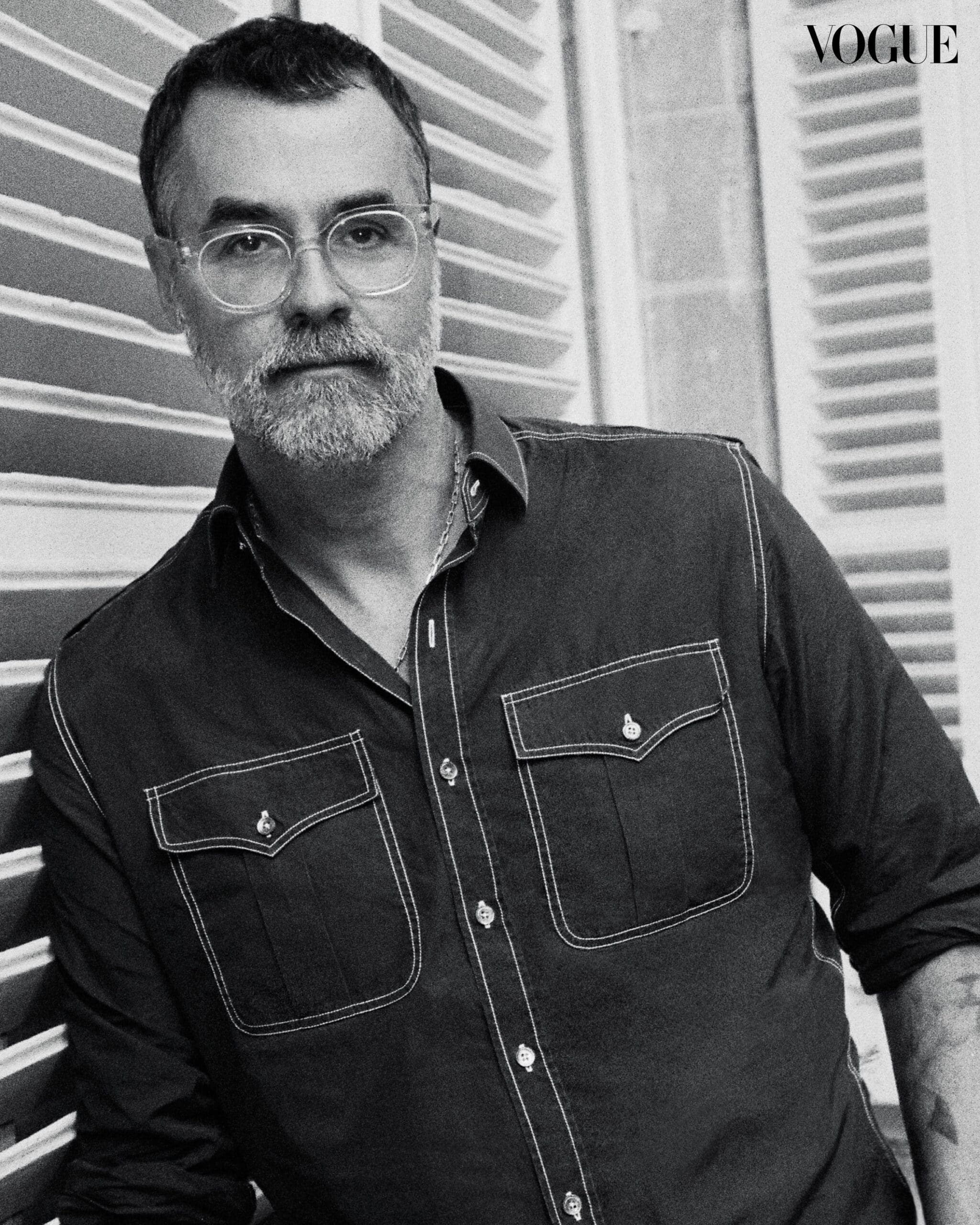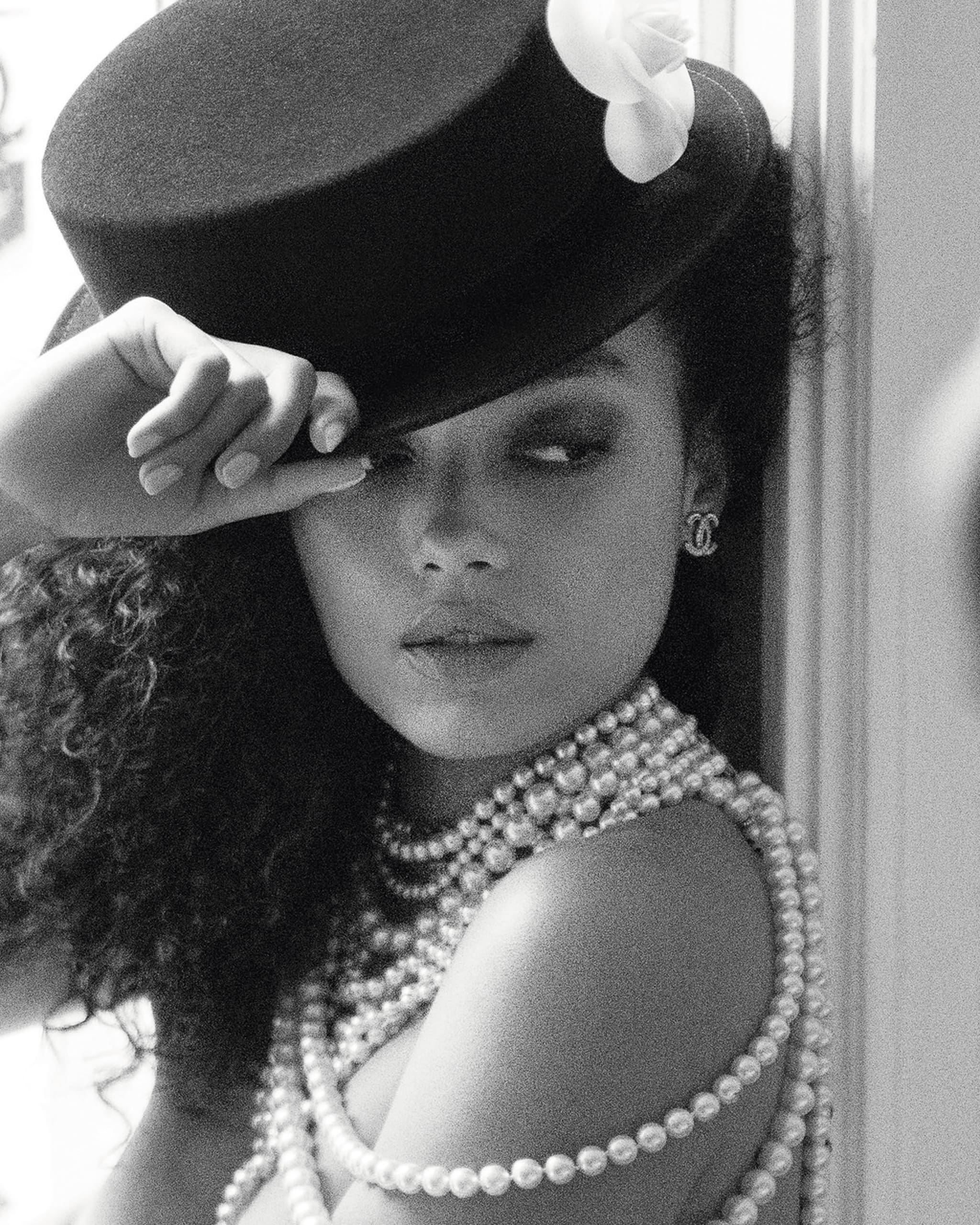Photo courtesy of Chanel
With the launch of Coco Mademoiselle’s new muse, Chanel’s Thomas du Pré De Saint Maur finds the balance in maintaining the brand’s codes and evolving them for a new generation.
When my customers come to me, they like to cross the threshold of some magic place,” Gabrielle Chanel said in 1935. “They are privileged characters who are incorporated into our legend.” This legend originates with Chanel herself, the designer whose transformation from a poor orphan girl to fashion’s most formidable name is an enchanting and enduring industry tale. Chanel loved to tell tales, often embellishing backstories about her family that disguised a bleak past—that after her mother died, her father, an itinerant peddler, deposited her and her sister at an orphanage and never came back.
Understanding that there is no tale more tantalizing, no origin story more inspiring than the truth itself, the House of Chanel naturally draws upon the legend that is Coco Chanel when crafting perfumes and building worlds around them, naming them after variations on her character, an enigma possessing a multitude of possibilities.
Gabrielle, as a young woman out of the convent, was determined to live a life of independence and freedom, one which she would build herself and which no one could ever take away. Starting as a seamstress, she cleverly maneuvered her way through society, growing a business empire that made her one of the richest and most influential women of all time. Her fashion—and fragrances—revolutionized the way women dressed and carried themselves.
Chanel artistic director for fragrance, watches, beauty, and jewelry Thomas du Pré De Saint Maur spoke to Vogue Philippines about the latest muse and campaign for Coco Mademoiselle, a scent first launched in 2001. Coco Mademoiselle’s égéries have always reflected the founder’s original spirit of youthful adventurism, referencing that alluring, heady phase of one’s life that one could look back on with no regrets. Nineties icon Kate Moss was the scent’s first face, followed by period-drama queen Kiera Knightley, whose 16-year-long reign wedded her to the image of Coco Mademoiselle for a generation.
Coco Mademoiselle, with its lighter, floriental notes, was one of the maison’s first forays in targeting a younger market. The name references Gabrielle’s years avant Chanel as she bravely tried her hand at performing as a cabaret singer (and where she got her nickname Coco) and turned her fondness of menswear and talent for designing hats into crafting clothes that women were actually comfortable wearing.
Last February, the 20-year-old Ugandan Canadian actress Whitney Peak was announced as the new muse of Coco Mademoiselle. She is the first black woman to front a Chanel fragrance, making this partnership a historic one.
Du Pré De Saint Maur explains the need now to tell another version of the story, a reboot, if you will. “There is a moment when you realize that if you want to carry on telling the same story, you need to make sure that that story doesn’t get taken for granted,” he says. “And the purpose of Chanel is to always, and in an unexpected way, tell the same story. It’s not creating surprise for the sake of creating surprise.”

“We didn’t want to lose what we loved when we first signed Kiera,” du Pré De Saint Maur continues. “She was like, ‘OK, let’s make it happen! Let’s do it!’ She had that ability to engage with people, that ability to transform the atmosphere of relationship between people just by who she is and what she gives. And Whitney is exactly the same.”
Peak, best known for her role in the two-season Gossip Girl reboot, found aspects of Gabrielle’s life that resonated with her own. The young actress moved to New York and being on her own made her realize how at home and alive she felt. “That’s because I wasn’t afraid to try new things, I wasn’t afraid to disappoint anybody, to perform or to be someone else,” she said.
Over a hundred years ago, Gabrielle Chanel tried something radically new, launching what would be the most popular perfume in the world. Chanel No. 5 was also the first “abstract” perfume, meaning it didn’t attempt to capture the essence of a single flower, but instead weave a complex narrative crafted from multiple ingredients. At the time, Gabrielle was already a successful businesswoman and feted society figure. She wanted to create a scent that stood for the independent modern woman, and what is woman if not complex?
No. 5 alludes to the fulfilled woman. Coco Mademoiselle speaks of her becoming.
“The brand talks about the endless journey of self-accomplishment,” du Pré De Saint Maur says. “The No. 5 woman has the experience; she has been exploring herself and has the confidence to embrace new things. Coco Mademoiselle talks about the same thing, but in a register about the youth. There’s a sense of appetite and joy in Coco Mademoiselle, which is related to that moment where you start your journey in the world.”
With a new égérie comes a refreshed campaign that maintains and reinforces elements of the classic Coco Mademoiselle character, but with parts that are pushed further. “I wanted to keep that seduction piece in the character of Coco Mademoiselle, but I didn’t want that to become the story,” says the artistic director. “I believe that with the young Gabrielle, the seduction was more of a global thing. She was seductive to everybody because her quality, her generosity, and energy was a seductive one.”
Coco Mademoiselle’s current incarnation in Whitney Peak builds on the character’s seductive qualities but refracts it outwards and in all directions. The new film, directed by Top Gun: Maverick director Joseph Kosinski shows “Coco” on a glamorous girls’ night out, sashaying through Paris, glittering like a mirrorball. “It’s not any more a story about her and a boy, but a story about her and other people, which I believe is even closer to the story of Gabrielle,” du Pré De Saint Maursays. “It’s more modern in the storytelling than just being about a boy and a girl.”
Changing or evolving the traditional Chanel codes can be a gamble, and it’s something that du Pré De Saint Maurcarefully considers. Chanel is the one luxury brand that has been the most consistent in its codes, and because of that remains the most recognizable. “The danger of that is the minute you think that the brand equals the codes, you are dead. Because codes are dead elements. They don’t bring life, they bring recognition, which is different,” he says. “So my job is to make sure that we keep the codes to keep enlarging the customer base, but that we tell a story which is alive, and that we keep on pushing it and we keep on making sense to the story, not just to the code.”
He gives the example of a 2017 commercial premiering the fragrance “Gabrielle” with Kristen Stewart bursting from a chrysalis, breaking free to run toward a sci-fi sunrise on the horizon. Stripped of the symbols we’ve come to associate with the brand—Parisian streets and bedrooms, a little black dress and pearls—audiences didn’t associate the campaign with Chanel. “We went too far in taking every single code away,” he says. “It’s always an exercise of balance between the two.”
One of the leading images from the current print campaign shows Whitney in bed with a giant bottle of perfume—reminiscent of Marilyn Monroe’s No. 5 photograph from 1952, something that du Pré de Saint Maur says they had fun recreating. As far as codes go, you can’t get a more recognizable image. Whitney, of course, makes it all her own. The way she embraces that bottle of Coco Mademoiselle is a statement declaring “it’s all mine.”
